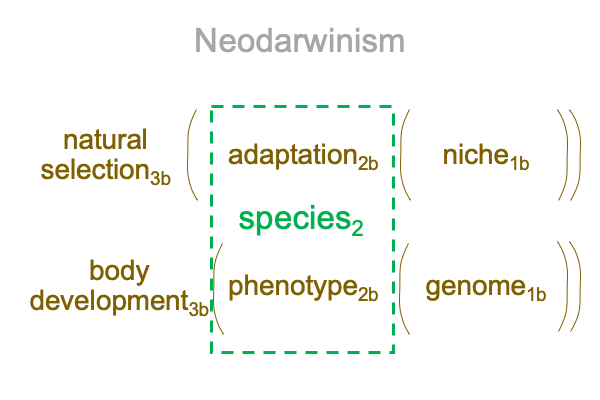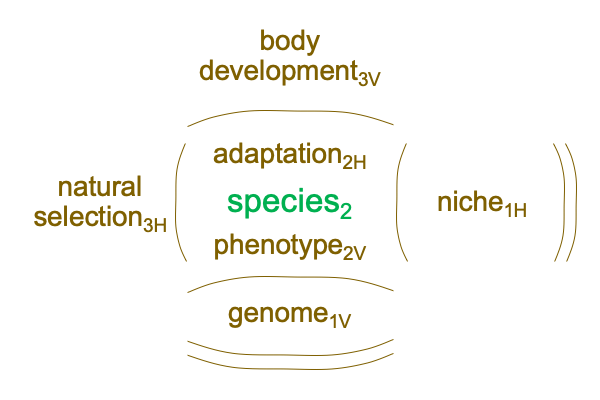0021 The authors formulate an “omega principle” that confounds adaptation2b and phenotypes2b and mixes natural history and genetics. The omega principle states that long-lived cultural traits are likely to be adaptive.
Long-lived cultural traits are epigenetic features that guide human development. As such, long-lived cultural traits are genomic. Even though they do not directly influence the transcription (or lack of transcription) of DNA2a, they do so indirectly. As an example, the authors discuss an optical illusion that applies in Western civilization, but not to indigenous cultures in the Americas.
0022 Another way to say this?
Long-lived cultural traits influence phenotypic expression. After all, contemporary Western civilization has traits that allows writing, programming, race-car driving, ballet dancing and so on. These arise from the Western “cultural DNA”.
And, according to the omega principle, these cultural traits are likely to be adaptations.
So, adaptation2b and phenotype2b are linked. One does not situate the other. So, they intersect. They both contribute to a single actuality. I label the single actuality, “species”, in the widest sense of the term. A species ranges from the biological definition of a type of living being to cultural definitions of types of specializations.
0023 For biology, NeoDarwinism entails the intersection of adaptation2b and phenotype2b.
Here is a picture.

0024 Of course, there is a more aesthetic way to depict an intersection.

0025 This intersection applies to biological evolution.
However, the omega principle suggests that this intersection somehow… maybe, metaphorically… applies to cultural evolution, as well.
